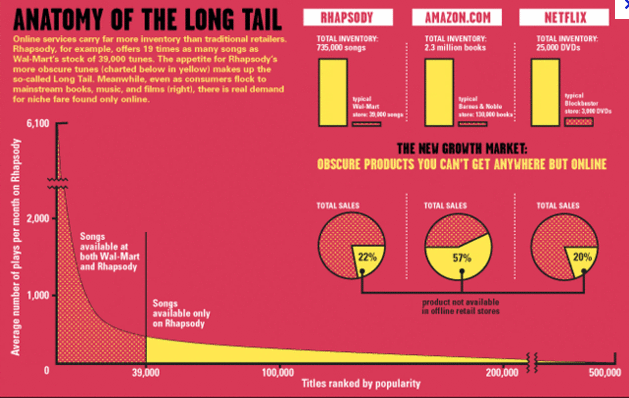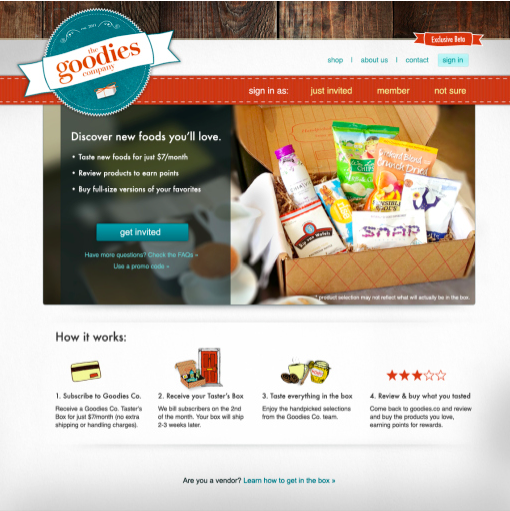Back in week one of E-Marketing, we discussed the idea of Micro Niches and the role that they can play in online commerce and marketing. The example commonly used, and the one diagrammed below, is music sales in Walmart vs. Rhapsody; One challenge for stores, which are always limited to certain amounts of inventory due to physical space of the store as well as holding costs, is which inventories to hold and which ones aren’t popular enough to keep in store. Studies have shown that there is a substantial market for the niche products that make up the “long tale”, however it is difficult for a retailer to cater to these niches. As you can see, Rhapsody was able to offer titles to the consumers that Walmart simply couldn’t do in store.
It’s quite ironic that this is the picture that we studied back in September, with Walmart being the focus company, as today Walmart officially announced their newest venture: Goodies. Someone at Walmart must have been sitting in on our class in September and realized that this idea does not only apply to the tech industry, with songs, movies, and books at the forefront, but rather it can apply across many different platforms – including groceries.
How does Goodies work?
Big grocery store chains have always found the challenge of not being able to cater to every one of their customers needs, and have therefore lost out on potential sales. With Goodies, subscribers pay $7 a month, including tax and shipping, to get a box of gourmet, organic and artisanal food valued at about $15, which they would otherwise never be able to find in store. The items are all “sample sized”, and the whole concept works around the idea of Discovery Commerce. If a subscriber finds that he or she wants more of any of the items, they can then go online and purchase the item from Walmart.
Issues
Goodies is clearly taken from Birchbox’s model, and there already seems to be a few competitors in this market such as Love with Food, as well as Tasterie. Walmart has stated that it plans to differentiate itself from these competitors by offering their products at a lower price due to their big-box retailer status. It has also brilliantly come up with the idea to let customers rate each product they are sent, even if they are not wanting to purchase any more of that particular item. They offer points, in which subscribers will eventually be able to redeem for a free box of unique products. This is a way that Walmart hopes to encourage others to buy these Niche products, because since they may not have tried them, they will have many recommendations from others to aid them in their purchasing process.
This idea of businesses catering to micro niches is something that can obviously be transferred to many different products worldwide, and online offerings like this one is something that I believe will continue to grow further down the road, as companies begin to see the advantages of this.




